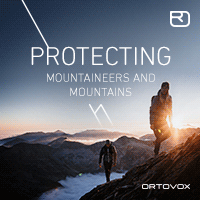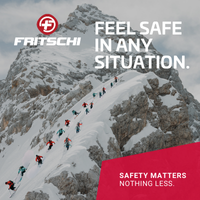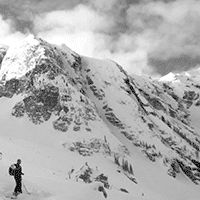The Ultimate Skiing Checklist for Extremely Cold Weather
Is this your first time going skiing, the most important thing to learn is not how to ski but how to dress appropriately.--------------------------------------sponsored--------------------------------------
Here’s the deal: it doesn’t matter what your skiing skills are, because if you dress poorly for the cold weather you’re simply not going to have a fun time. It’s important to invest in the right apparel and equipment, including a waterproof coat, proper insulation, pads, and electric heated gloves to name a few things.

Here is the ultimate checklist of items you’ll need to ski in cold weather:
Skis
First and foremost, you’re going to need skis. The size of skis you get will be determined by your height. You should also get ski poles, especially if you are a beginner.
Waterproof Coat
A must have item for skiing in warm weather will be a fully waterproof and well insulated coat. The best kind of skiing coat will have a waterproof shell with an insulated jacket beneath it, and give you the option of wearing either one or the other or both together. Your coat of choice should also be rated for temperatures down to a few degrees below zero in order to truly keep you warm.
Waterproof Snow Pants
The same principles for your waterproof coat apply to your snow pants also. They should have a waterproof outer layer and then an insulated inner layer for warmth and comfort.
Fleece Pullover
For extra insulation, you may also want to invest in a fleece pullover, especially if your waterproof coat doesn’t already come with an insulation layer beneath the outer shell. The point of the fleece is to keep you warm and cosy while you are out on the slopes.
Fleece Pants
Just as you will want a fleece pullover to keep your torso insulated, so you will want fleece pants underneath your snow pants to keep your legs and waist fully insulated and cozy as well. This is especially crucial if your snow pants do not have an insulation layer.
Warm Hat
You’ll wear a helmet for skiing, but you can use a warm winter hat for walking around outside in the snow when you’re not actually on the slopes.
Ski Socks
You shouldn’t wear ordinary socks for skiing. In fact, you shouldn’t even wear ordinary winter socks for skiing. Instead, you should be wearing warm socks that are designed specifically for skiing.
Such socks are designed to prevent your ski boots from rubbing uncomfortably against your feet. It’s also not necessary to wear two layers of regular socks like many novice skiers do.
Neck Gaiter
A neck gaiter is designed to keep your neck warm and insulated. The best neck gaiters to get will be ones that are super easy to adjust and that also can be pulled up over your nose for superior protection. For super cold days, you may want to upgrade to a balaclava.
Torso Protector
A torso protector is not one hundred percent necessary for skiing, but it is definitely a nice thing to have if you have a sensitive back or anything like that. If and when you fall over while learning how to ski, a torso protector can help keep you protected from the impact of falling over hard crusty snow.
Helmet and Goggles
A helmet and goggles will keep your face, head, and eyes shielded from the elements and injury. These are especially critical to have for beginners.
Guards and Pads
Again, these are definitely nice to have for beginners because they can help keep you safe and protected. Specifically, go with wrist guard and knee and elbow pads. You’re going to be falling over a lot when first learning how to ski, so you will really need these to help keep you safe. Both wrist guards and elbow and knee pads will be worn externally over your coat and snow pants.
Avalanche Pack
An avalanche pack is something that you wish you never have to use but that you’ll be incredibly glad you had if the time comes to use it. The best kind of avalanche pack will have an airbag system that is a part of the backpack and inflates with the single pull of a cord, making the person wearing it larger than they are (remember that in an avalanche, larger items rise towards the surface while smaller ones get buried towards the bottom).
Conclusion
Before you hit the slopes this winter, make sure that you have each of the above items with you.

--------------------------------------sponsored--------------------------------------








